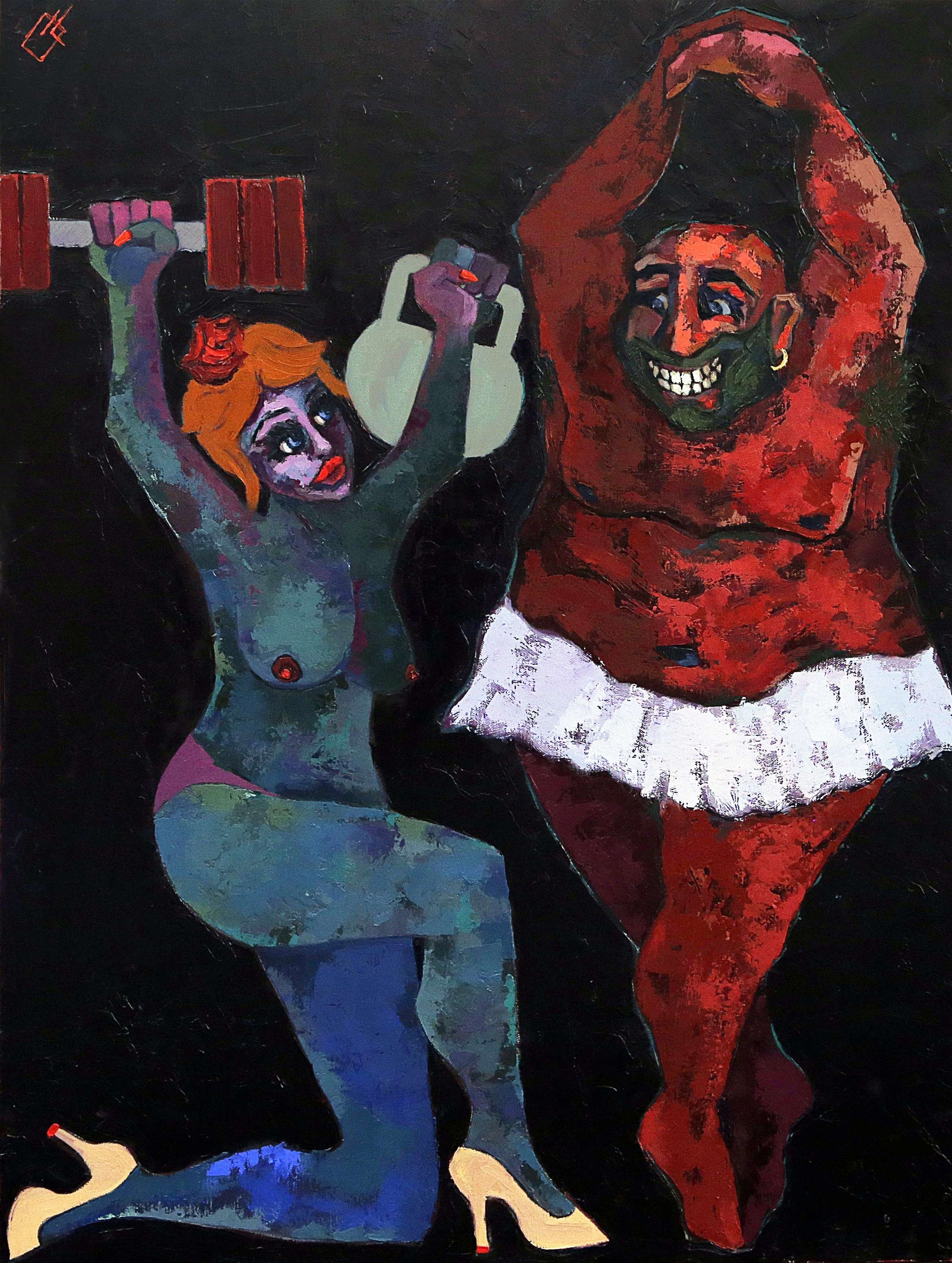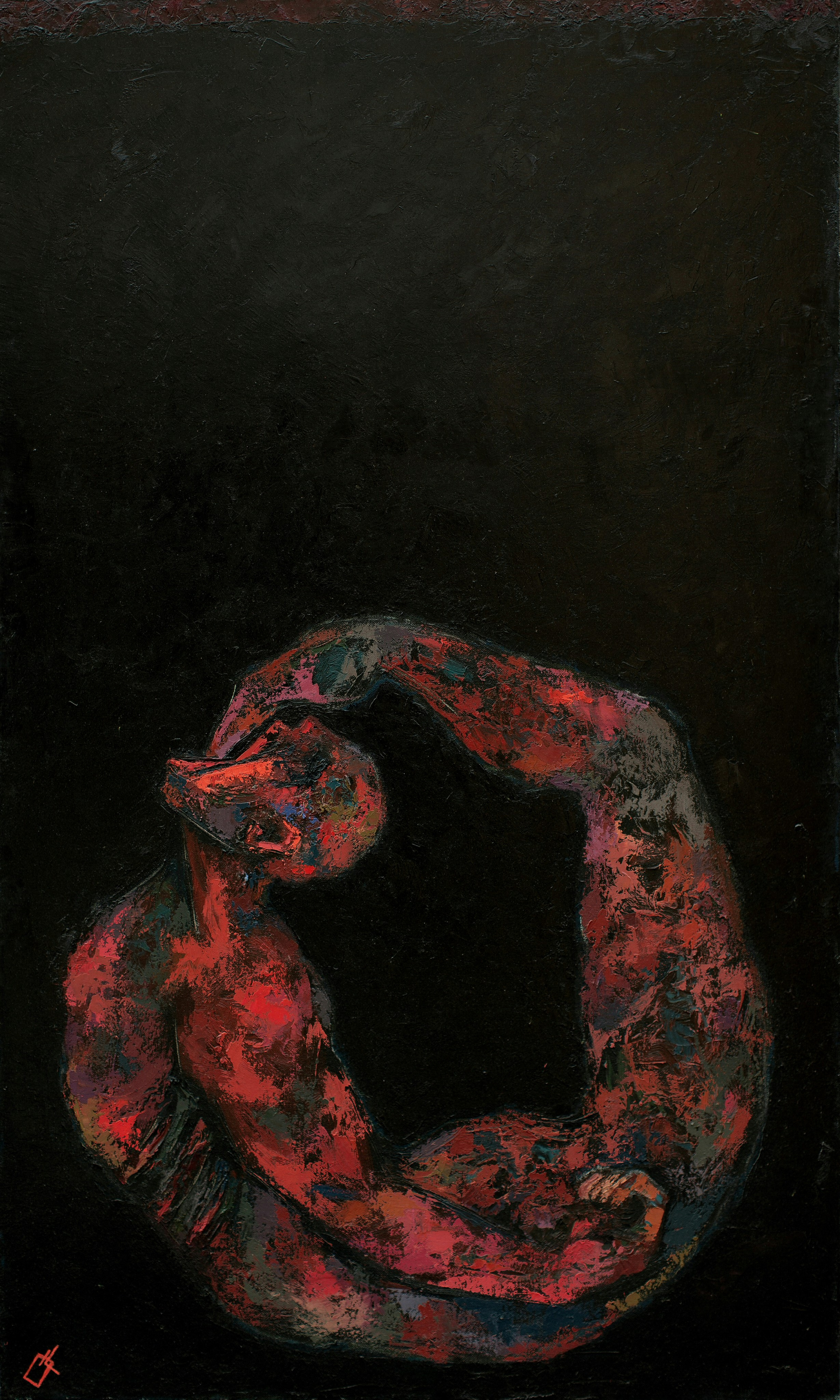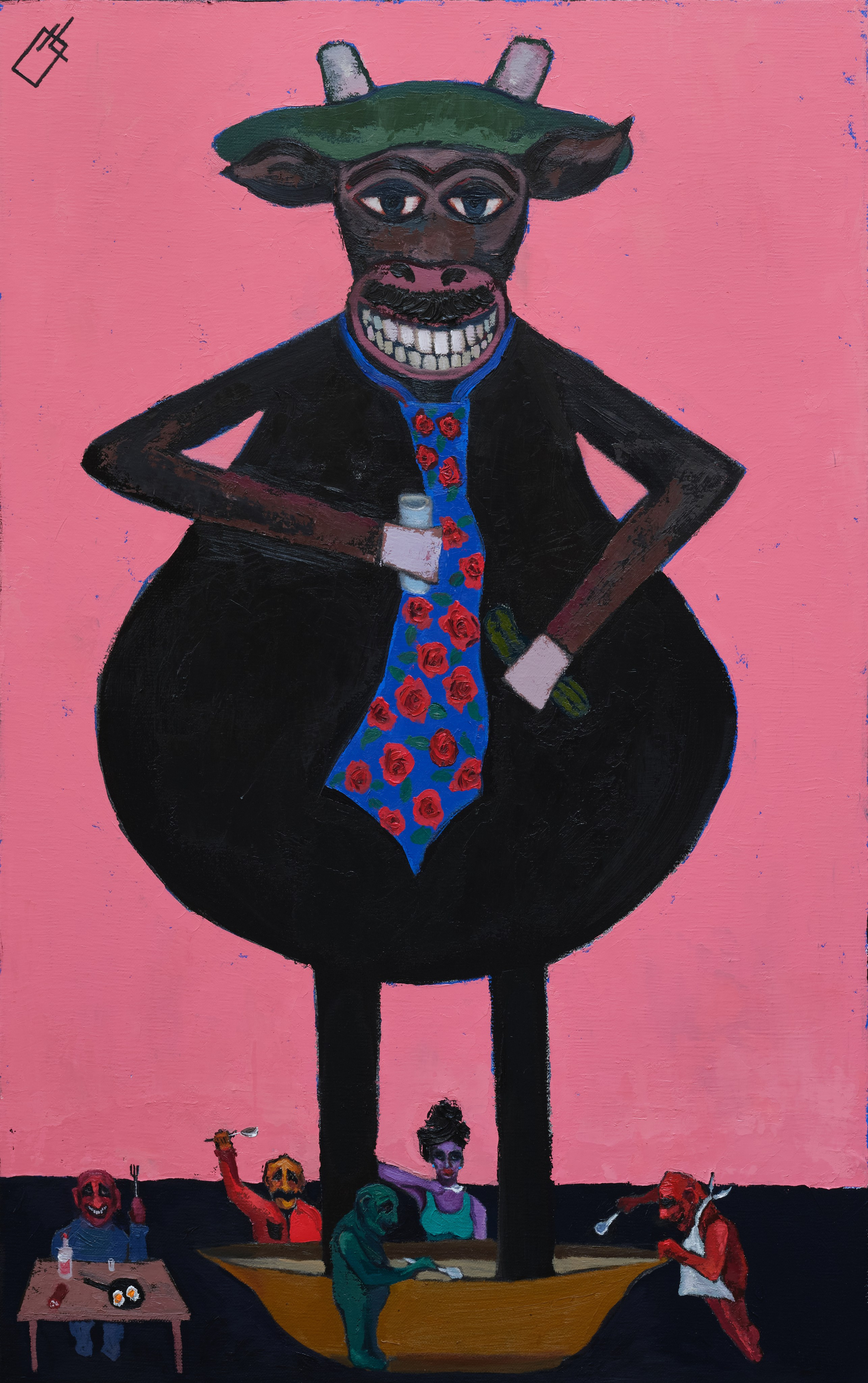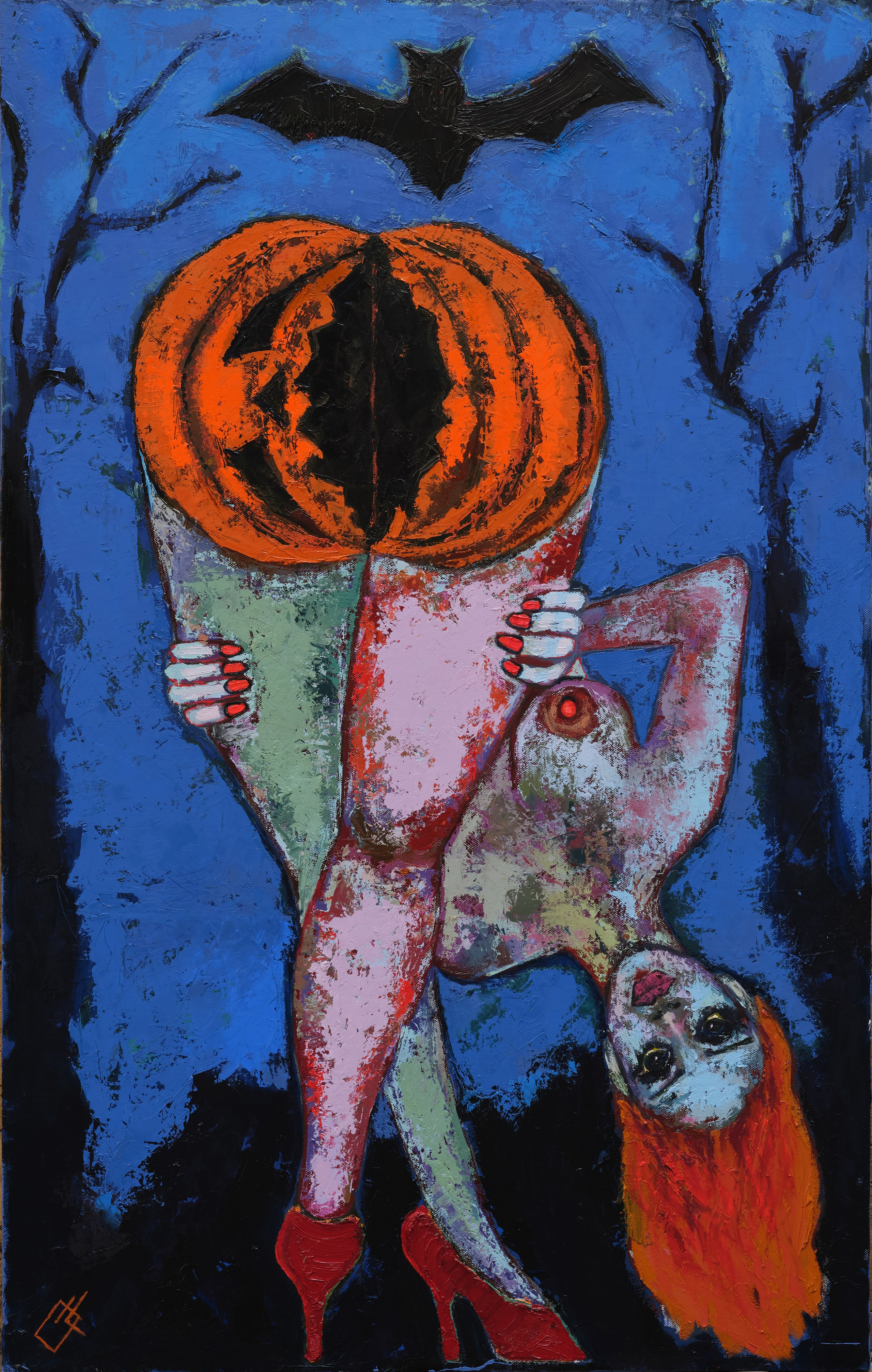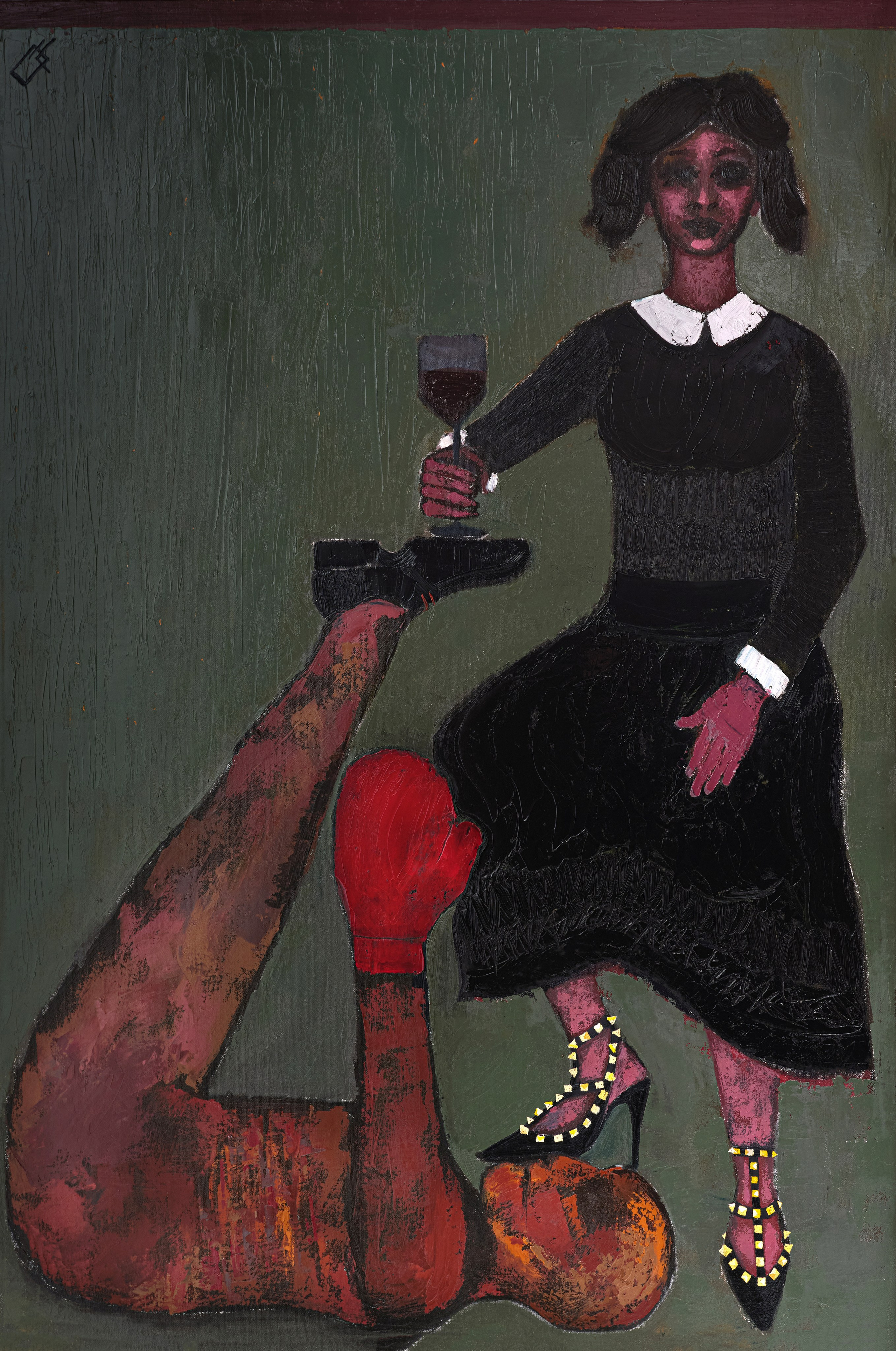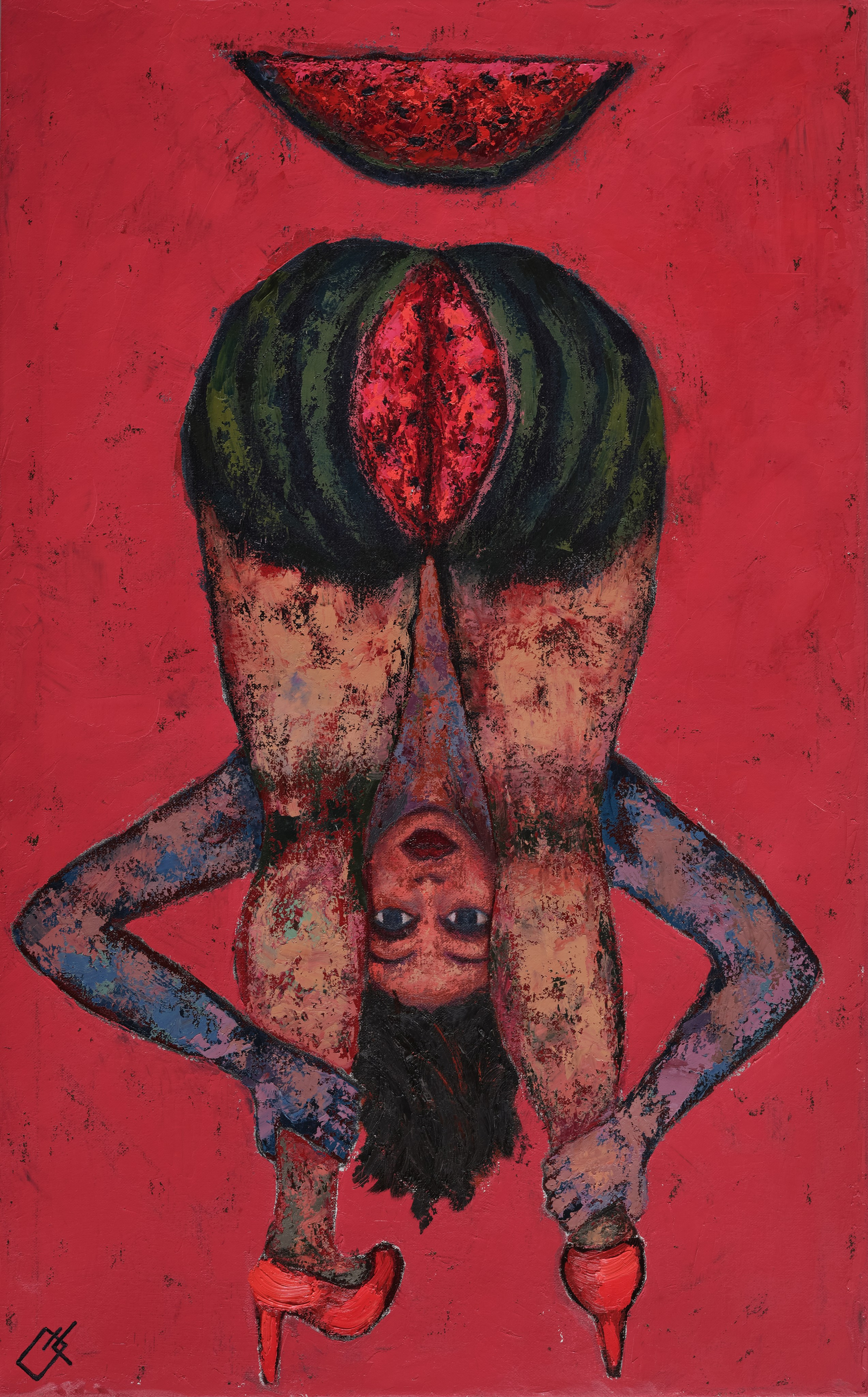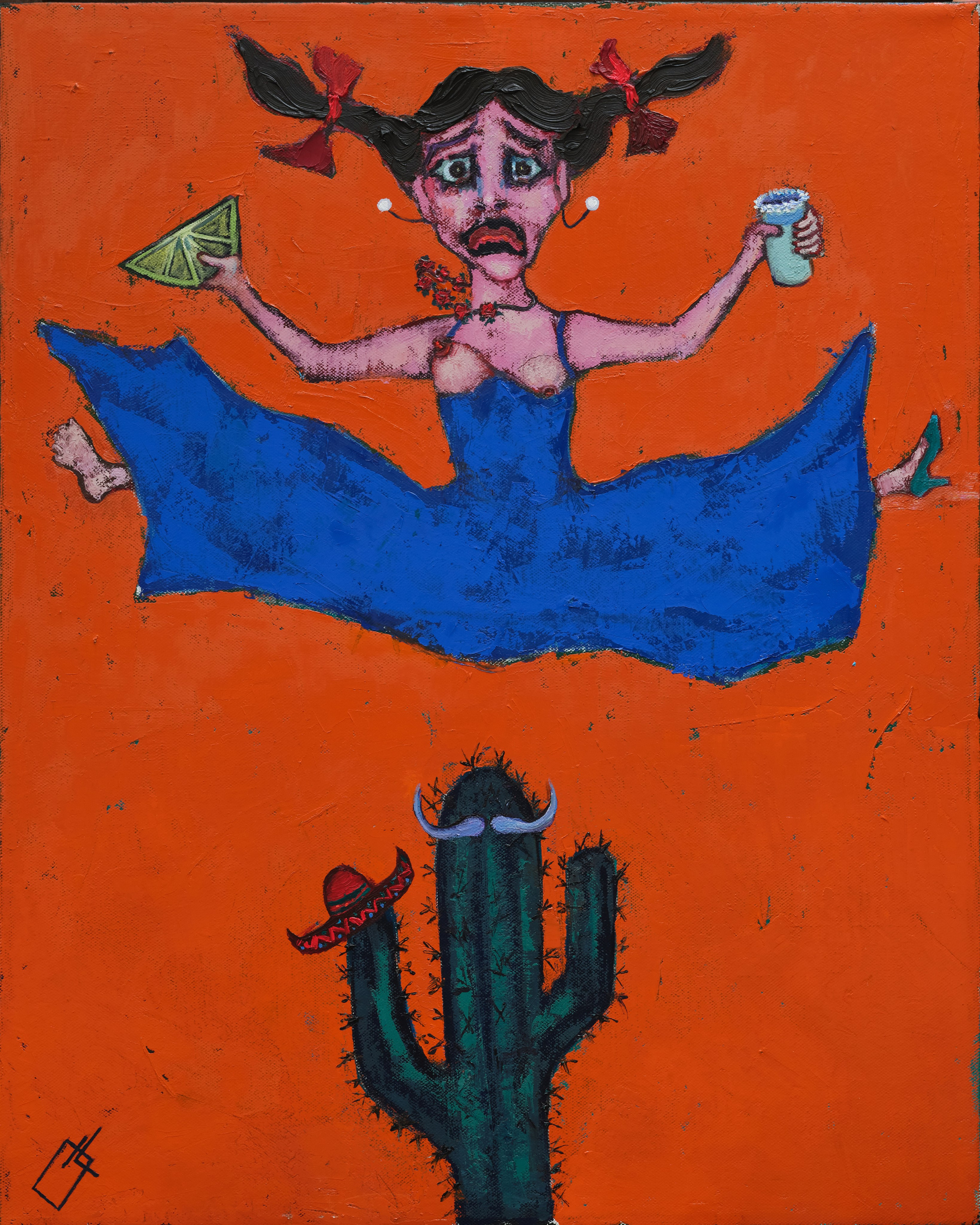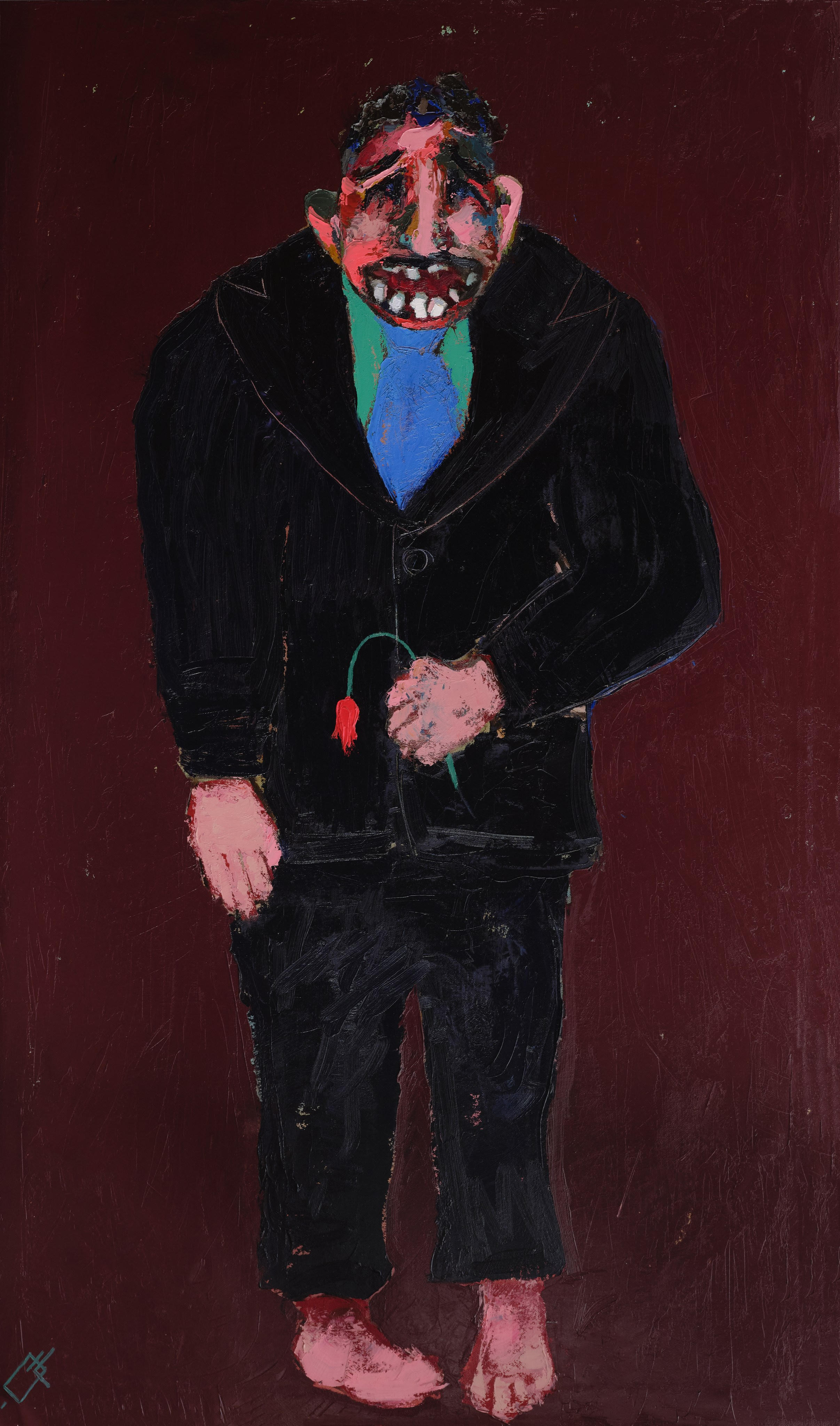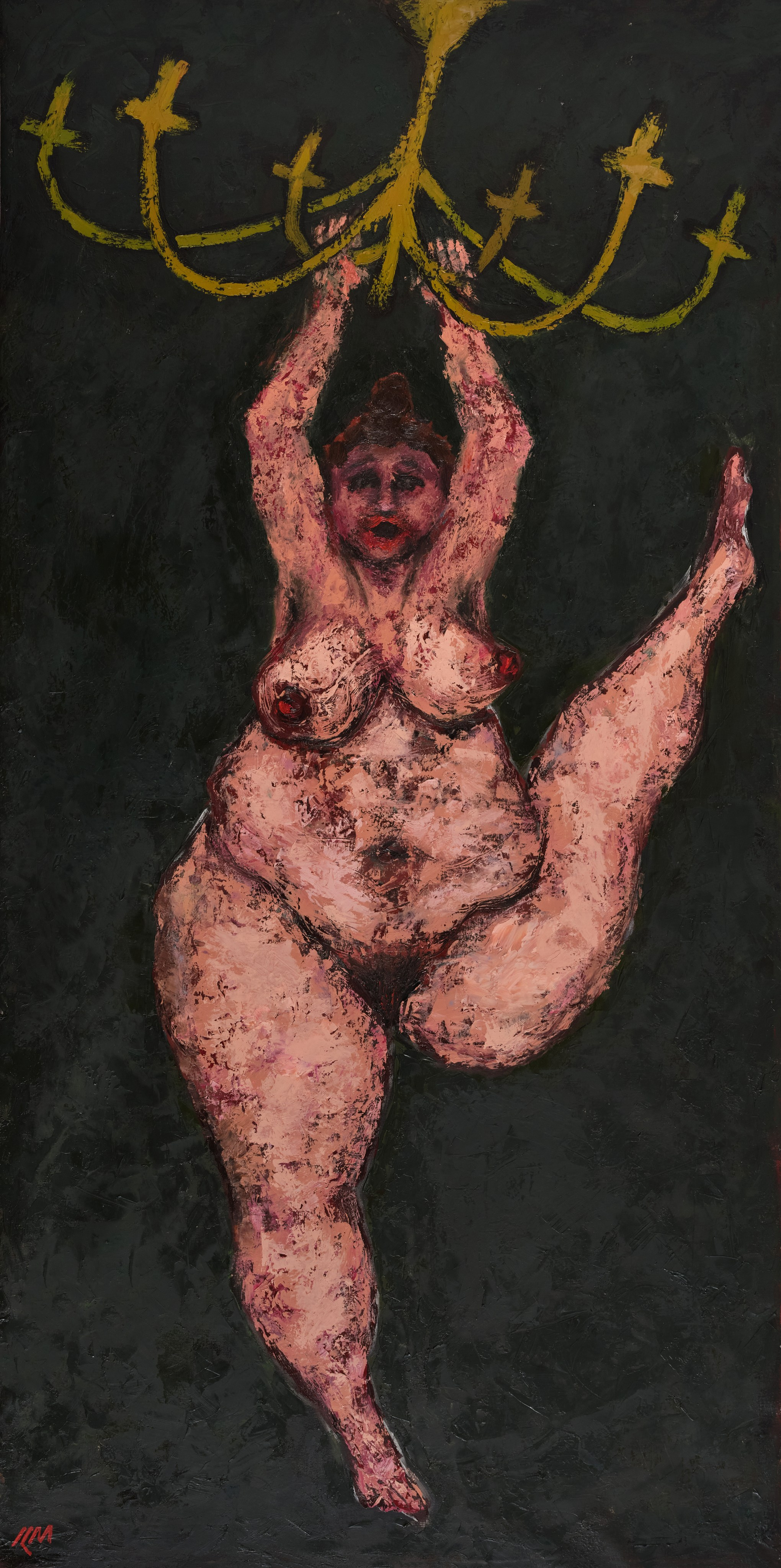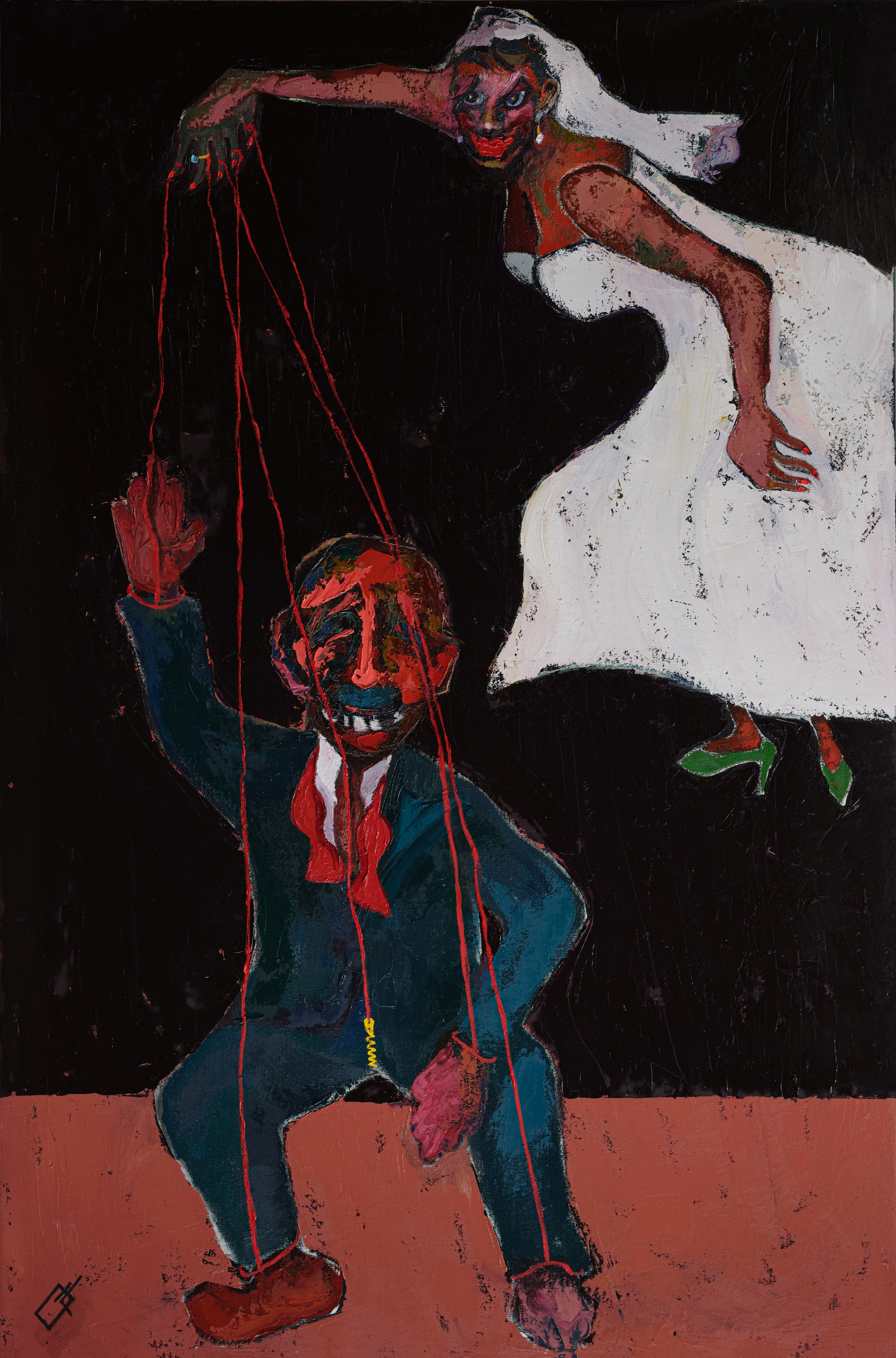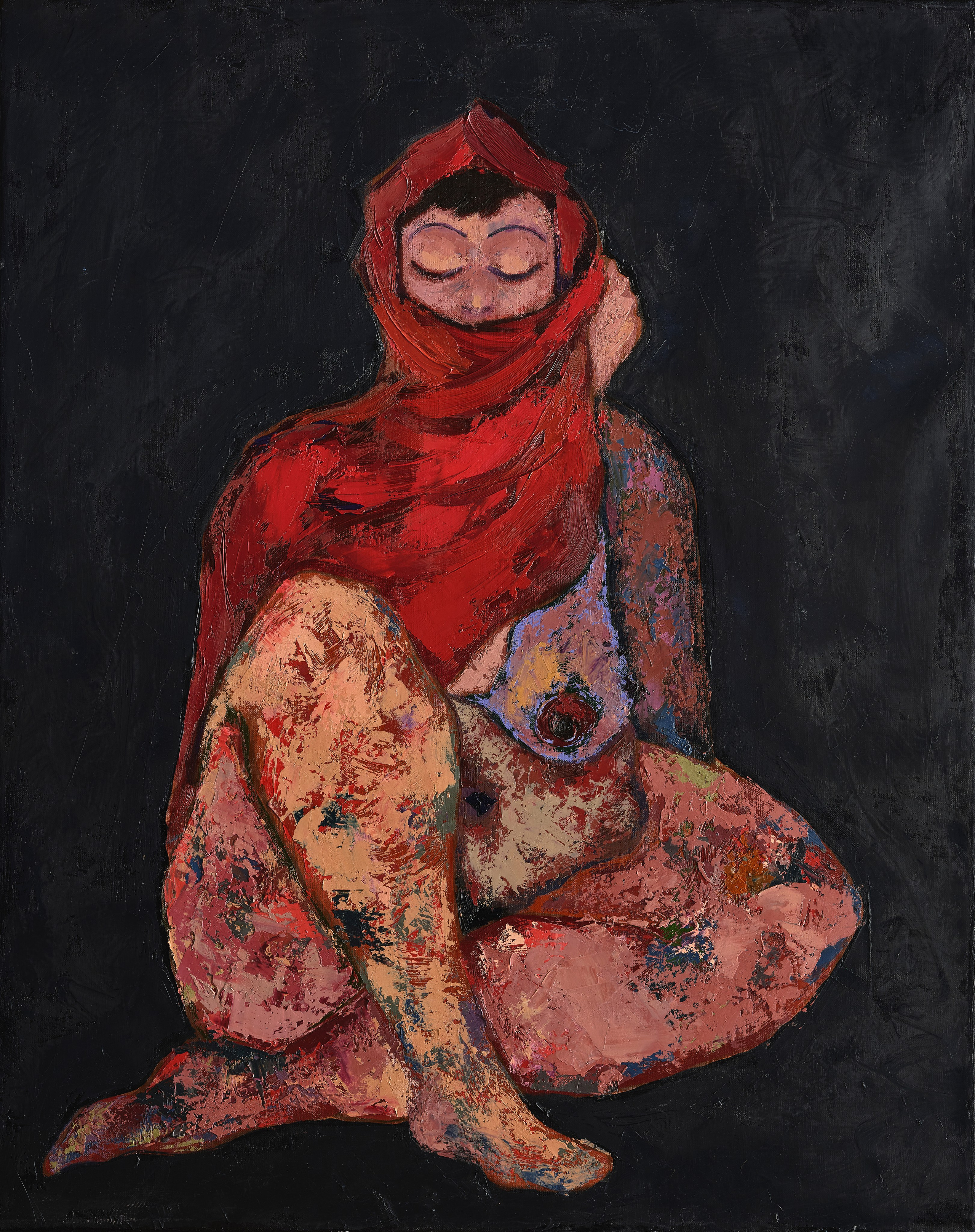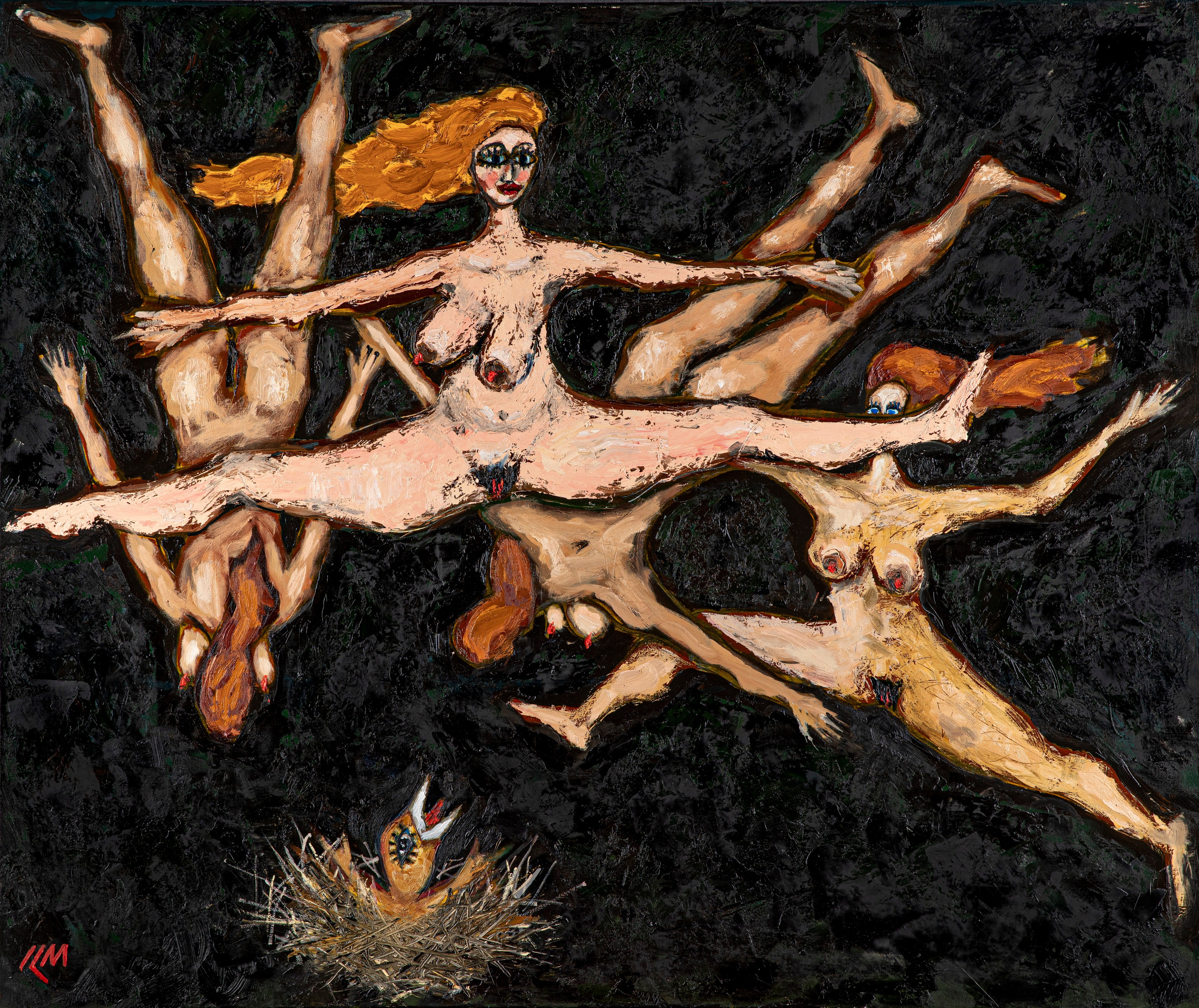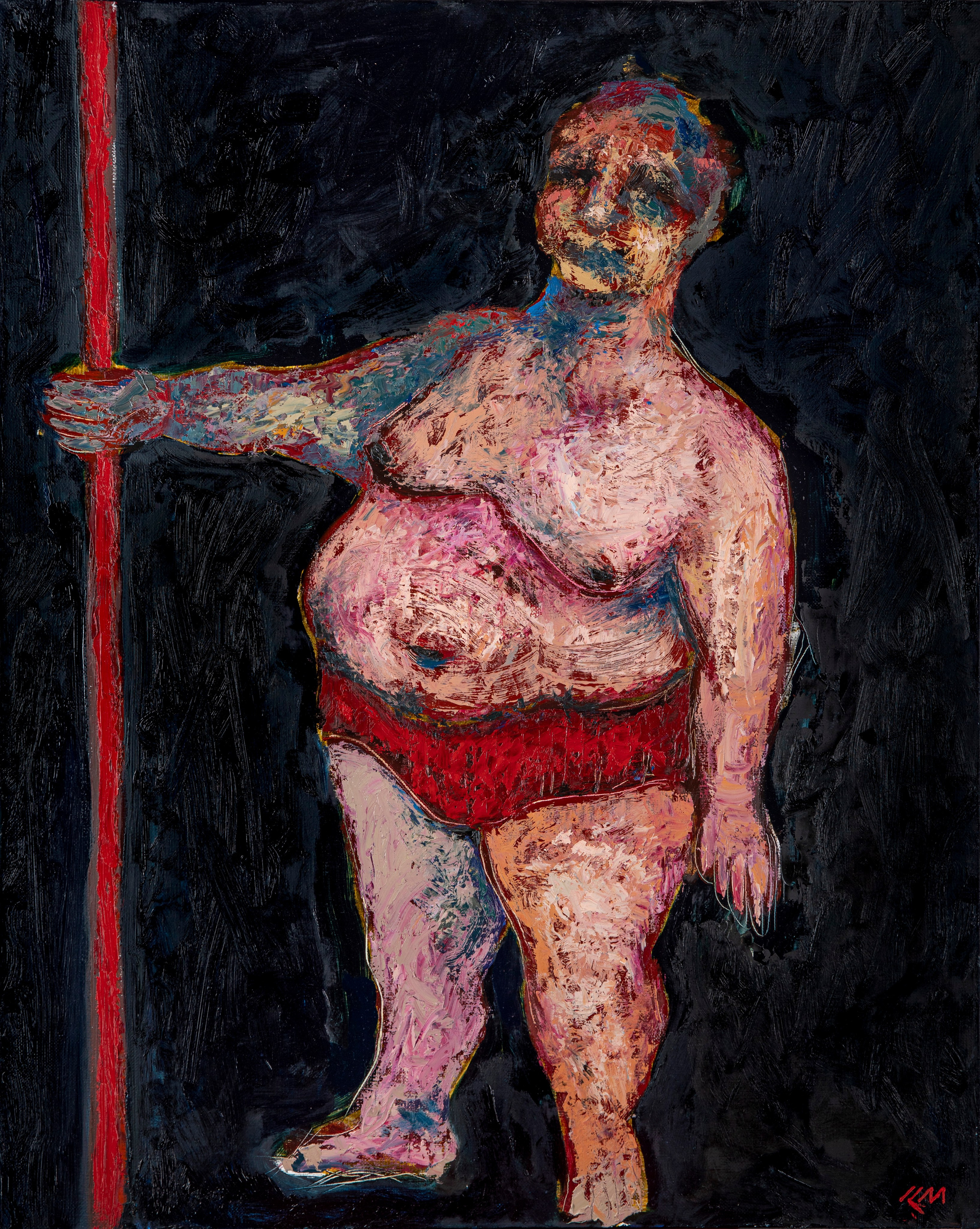Role reversal
This painting cleverly captures the evolving dynamics of gender roles in contemporary society, blending satire and social commentary with vibrant, expressive visuals. It humorously portrays the reversal of traditional gender roles, highlighting a strong, hardworking woman embracing responsibilities typically associated with men, while still maintaining her femininity. On the other hand, the man is shown in a playful, exaggeratedly feminine pose, with a wide smile, a tutu, and an out-of-shape physique, adding a comedic touch to the scene. The painting invites viewers to reflect on the shifts in societal norms, the balance of responsibilities, and the evolving perceptions of gender identity, all while employing a satirical tone. Additionally, the artist’s use of color—contrasting red and green, which are opposites on the color wheel—emphasizes the stark difference between the man and the woman, while underscoring the paradox of the roles they have adopted.
Reversed Gender Responsibilities:
The woman takes on traditionally masculine responsibilities, such as weightlifting, symbolizing how women today are increasingly stepping into roles once dominated by men. However, her flower, makeup, and heels demonstrate that she doesn’t abandon her femininity, balancing both strength and elegance.
The Man’s Transformation:
The man, by contrast, has embraced roles or behaviors traditionally associated with women, as represented by the tutu and his playful, exaggerated pose. His carefree smile and less athletic physique highlight a level of comfort and perhaps apathy in this role reversal.
Societal Trends and Critique:
This could is a reflection of modern trends where some men, when stepping away from traditionally “masculine” roles, do so without maintaining a sense of responsibility or discipline (represented by his lack of fitness).
Meanwhile, women, while taking on more responsibilities, work hard to excel in these roles while still striving to maintain their individuality and appearance.
Underlying Message:
The painting seems to suggest that, sometimes in the modern world, women are taking on more than what is traditionally perceived as their norm, working hard and excelling in areas often associated with masculinity. Meanwhile, men appear to be becoming softer, losing their traditional masculinity, and increasingly engaging in activities typically perceived as feminine. This shift challenges viewers to reflect on the evolving definitions of masculinity and femininity and their implications in society.

